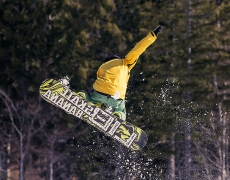Fuori fuoco, bokeh – misurare l’effetto sfocato e confrontare obiettivi

Misura dell’effetto sfuocato sullo sfondo o su soggetti in primo piano. Confronto a parità di inquadratura tra diversi obiettivi a diverse aperture.
___________________
Background or foreground blurred effect measure. Effects given by different lenses and apertures.

Quando riprendiamo un soggetto siamo soliti pensare alla messa a fuoco ed alla profondità di campo, per essere sicuri che siano a fuoco tutti gli elementi che ci interessano. Ma cosa succede fuori dalla profondità di campo? L’effetto sfocato che si ottiene non è sempre lo stesso e dipende da diversi fattori: la lunghezza focale, l’apertura, la distanza del punto di messa a fuoco e la distanza dello sfondo o di un elemento in primo piano.
Veniamo al calcolo. Prima di tutto dobbiamo calcolare alcuni parametri: il fattore di ingrandimento M = LF/(LF-D) (con: LF = lunghezza focale, D = distanza tra il soggetto a fuoco e la camera) e l’apertura del diaframma in millimetri A = LF/f (con: f = f-stop).
A questo punto, posto Db = (distanza tra sfondo e soggetto a fuoco) e Df = (distanza tra soggetto a fuoco e la camera), si ottiene:
EFFETTO SFOCATO SFONDO = -M*A*Db/(D+Db)
EFFETTO SFOCATO PRIMO PIANO = -M*A*Df/(D-Df)
EFFETTO SFOCATO E CONFRONTO TRA LENTI
Supponiamo di fare uno scatto ad un soggetto distante 2 metri con un 50mm impostando un’apertura f/2. Immaginiamo uno sfondo a 5 metri dal soggetto a fuoco ed un elemento in primo piano ad un metro dal soggetto a fuoco. Supponiamo ora di avere anche un 135mm f/2.8 e di voler valutare quale dei due obiettivi dà l’effetto sfocato migliore a parità di inquadratura. Facendola breve, ipotizzando di avere un full frame tipo 6D Canon, si può calcolare che il 135mm ha un effetto sfocato migliore sullo sfondo, pari a 1,3 volte quello del 50mm, mentre il 50mm ha un effetto sfocato migliore sull’oggetto in primo piano, pari a 2,2 volte quello del 135mm.
Da notare: si può ricavare anche la dimensione in millimetri o in pixel dello sfocato, molto utile per farsi in fretta un’idea del risultato.
Una precisazione: per riprendere la stessa inquadratura, con il 135mm ci dovremo porre ad una distanza maggiore (5,4 metri), distanza alla quale i due obiettivi così impostati, avrebbero la stessa profondità di campo, garantendoci la stessa messa a fuoco nel fotografare il nostro soggetto (nel nostro esempio il 50mm con apertura f/2 e soggetto a 2 metri ed il 135mm con apertura f/2.8 e soggetto a 5,4 hanno entrambi una profondità di campo di 8 centimetri).
Per risparmiarvi questi calcoli ho impostato un WIDGET per fare queste valutazioni.
____________________
OUT OF FOCUS BLUR, BOKEH – BLURRED EFFECT MEASURE
When we take a picture, we usually think about focus and depth of field, to be sure to get in focus all we need. But what happends out of depth of field?! The out of focus blur is not allways the same and depends on several factors: focal lenght, aperture, focus point distance, background or foreground distance.
About calculation, we have to value Magnification M = LF/(LF-D) (LF = focal length, D = distance between target and camera) and Aperture in millimeters A = LF/f (with: f = f-stop).
Setting Db = (distance between background and target) and Df = (distance between target and the camera), we obtain:
BACKGROUND BLURRED EFFECT = -M*A*Db/(D+Db)
FOREGROUND BLURRED EFFECT = -M*A*Df/(D-Df)
OUT OF FOCUS BLUR AND COMPARISON BETWEEN LENSES
Suppose you take a shot at a target 2 meters away with a 50mm setting an aperture f/2. Imagine a background 5 meters from the target and a foreground element at one meter from the target. Now suppose to have also a 135mm with aperture f/2.8 and to evaluate which one gives the best blurred effect with the same framing.
Assuming you have a full frame like Canon 6D, you can calculate that the 135mm has a better blurred effect in background, equal to 1.3 times the 50mm, while the 50mm has a better blurred effect on foreground object, equal to 2.2 times the 135mm.
NB: you can also get the blurred effect dimension in millimeters or pixels, very useful to get a quick idea of the result.
Clarification: to shoot the same framing, the 135mm should be placed at a greater distance (5.4 meters), distance at which the two lenses, so set, would have the same depth of field, ensuring the same focus photographing our target (in the example: the 50mm with aperture f/2 and target at 2 meters and the 135mm with aperture f/2.8 and target at 5.4 meters, both have a depth of field of 8 centimeters).
To spare you these calculations I set up a widget to make these evaluations, you can find it HERE.
If you have any comments, questions or doubts, feel free to add a comment!
My English is not the best, if you find errors, help me to improve!